Gods and Goddesses of the Celtic Pantheon - Part I
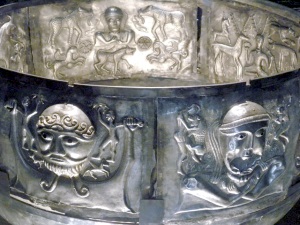
Celtic Mythology is a foundation stone supporting, along with the language, music and dance, our collective Celtic identity. Celtic Mythology is rooted in the Oral traditions of the six Celtic nations and in surviving manuscripts. Too few texts have survived the savagery and wanton destruction directed at the Celts over the centuries during the emergence of the modern nation states of England and France. The surviving written Celtic source documents are due to accidents of history and geography, mainly Irish and Welsh in origin. The Folkloric traditions of the Six Nations often amplify and sometimes deviate from the written record and provide an important source of our knowledge of the Celtic pantheon. This article is the first part of our survey of the Gods and Goddesses of the Celtic Pantheon.
Tuatha Dé Danann
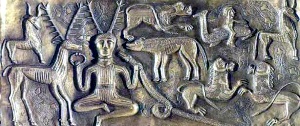
The Tuatha Dé Danann form a significant feature in Irish, Scottish and Manx mythology. They are Celtic pre-Christian gods with supernatural ability and were of great importance to Gaelic people. They belong to the Otherworld (Aos Si) community whose world was reached through mists, hills, lakes, ponds, wetland areas, caves, ancient burial sites, cairns and mounds. Their association with ancient Neolithic and Bronze Age burial mounds is probably linked to the importance these sites had for the people of pre-history. They were places of communal interment for the ancestors of the Celts of northwest Europe who are descended from the native Neolithic peoples of these lands. Their story was passed on for many centuries in oral tradition. Many of these legends were recorded in a collection of poems and texts, some dating from the third century AD, and compiled in the eleventh century by Christian scholars in such works as the Leabhar Gabhála Éireann known in English as The Book of Invasions.
The Supreme Dagda
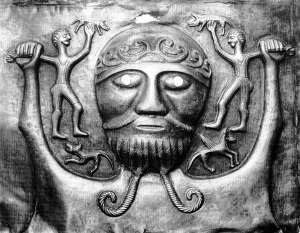
Dagda is the leader and father figure and Druid of the Tuatha Dé. Symbol of life and death he was known by other names including Ruadh Rofhessa (Red One Great in Knowledge). Amongst his many lovers he is noted for his relationship with Boann, a river goddess from whom Ireland’s River Boyne takes its name. One of his offspring is Brigid, Celtic fertility goddess. Dagda is a brother of Ogma who was a great warrior, also associated with learning and the creator of Ogham script. Brother also of Lir, Celtic god of the sea who was the of father of Manannán mac Lir. Dagda was to become King of the Tuatha Dé Danann after Nuada who had been King was injured in battle. Tuatha Dé (Danann) were the gods of the Gaelic peoples. The myths and stories of these supernatural entities were handed down in oral tradition for centuries.
Manannán Mac Lir – Son of the Sea and Protector of the Isle of Man
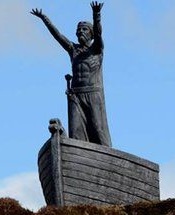
Manannán is a Celtic sea god and associated with the Tuatha de Danaan (thoo'a-hay-day-danawn). His legend is widespread throughout the Celtic lands. His father was Lir, God of the Sea. Both Lir and his son Manannán are mentioned in the work of ‘Sanas Cormaic’ by Cormac mac Cuilennáin, King of Munster. In Cormac's 9th century glossary, he links both to the sea. The Isle of Man is named for this Celtic God and is this Celtic nation’s first ruler and protector. It is said he could bring down a cloak of mist that would hide the island from foreign threat. Using his magic powers he controls the wind and the waves and bring forces to defend the island.
Korrigans – Sirens of Breton Myth
In the rich Celtic mythological tales of Brittany, the Korrigans form a group of female entities who are associated with rivers and wells. Sometimes they are described as fairy like creatures with beautiful golden hair. They are seen in some tales as changelings who can alter their shape. Sexuality and immorality connected to the Korrigan is a common folkloric theme. They can lure men with their beauty and have the power to make them fall in love with them.
The Selkie Folk of the Scottish Seas
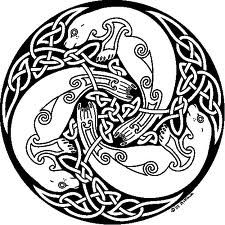
The Selkie-folk, in the mythology of Orkney and Shetland, are a supernatural race of shape-shifting seal creatures. They are said to be able to shed their seal skin and then take human form. However, it was vital for the Selkie never to lose its seal skin for it was that which gave them the ability to return to their original seal from. Sometimes the Selkies were known for shedding their skins and sunbathing on the beaches and rocks in their human form. Selkie males were said to be able to turn into handsome mortals and are noted for their encounters with the women they were able to seduce. Selkie females are also said to be highly attractive in their human form to men.
Further reading
Changelings, Fairies, Deities, and Saints: The Integration of Irish Christianity and Fairy Tale Belief by Bridget Waldron.
Content type:
- Pan-Celtic
Language:
- English
- Log in to post comments






